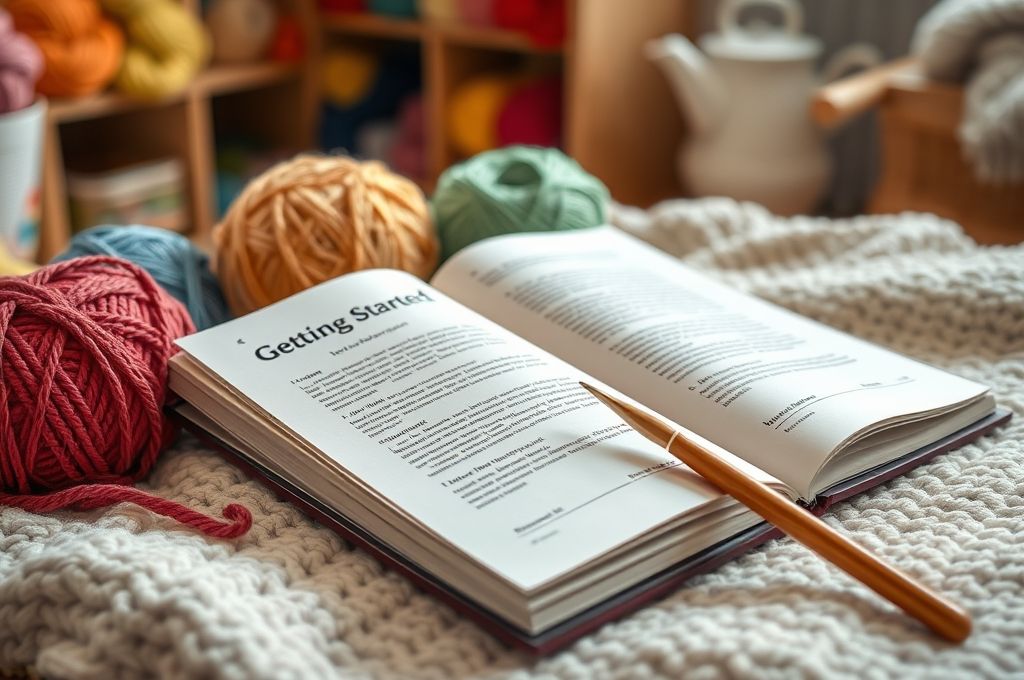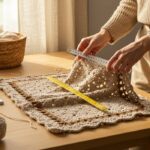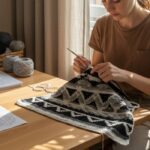Introduction: The Joy of Creating One Stitch at a Time
Imagine sitting on your favorite couch, a soft yarn running through your fingers, and a simple hook transforming that yarn into something beautiful—maybe a cozy scarf, a colorful baby blanket, or even a whimsical amigurumi toy. That’s the magic of crochet. It’s not just a craft; it’s a creative journey that combines mindfulness, skill, and self-expression. And the best part? You don’t need years of experience to start. In fact, your very first project could be just a few hours away.
Crochet has seen a major resurgence in recent years, and for good reason. Beyond the joy of making something with your hands, studies have shown that crafting like crochet can reduce stress, improve focus, and even boost feelings of accomplishment. Whether you’re looking for a new hobby, a way to unwind after work, or a creative outlet that results in tangible, heartfelt gifts, crochet is an accessible and rewarding choice.
In this guide, we’ll walk you through everything you need to know to start crocheting confidently—no prior experience required. From choosing the right tools and understanding basic stitches to completing your first project and avoiding common beginner mistakes, we’ve got you covered. By the end of this article, you won’t just know how to crochet—you’ll be excited to pick up a hook and start creating. Let’s dive in.
1. Why Crochet? More Than Just a Craft
Before we get into the how, let’s talk about the why. What makes crochet such a special and enduring craft?
For starters, it’s incredibly versatile. With just a hook and some yarn, you can create anything from practical items like dishcloths and hats to intricate lace shawls and stuffed animals. Unlike knitting, which requires two needles and can feel intimidating at first, crochet uses a single hook, making it easier to manage for beginners.
But beyond the practicality, crochet has emotional and mental benefits. A 2013 study published in The British Journal of Occupational Therapy found that 81% of people who engaged in crafts like crochet reported feeling calmer and happier. The repetitive motion of stitching can be meditative, helping to quiet a busy mind. It’s like a moving meditation—each loop and stitch pulls you gently into the present moment.
Crochet is also a social craft. Online communities, local yarn shops, and crochet-alongs (CALs) bring people together across ages and cultures. Whether you’re 15 or 75, you can find your tribe in the crochet world. Plus, handmade gifts carry a personal touch that store-bought items simply can’t match.
And let’s not forget affordability. Compared to many hobbies, crochet is relatively low-cost to start. A beginner can begin with under $20 and still create beautiful, functional pieces. So if you’ve been looking for a creative, calming, and fulfilling hobby, crochet might just be your perfect match.
2. Your Crochet Toolkit: What You’ll Need to Get Started
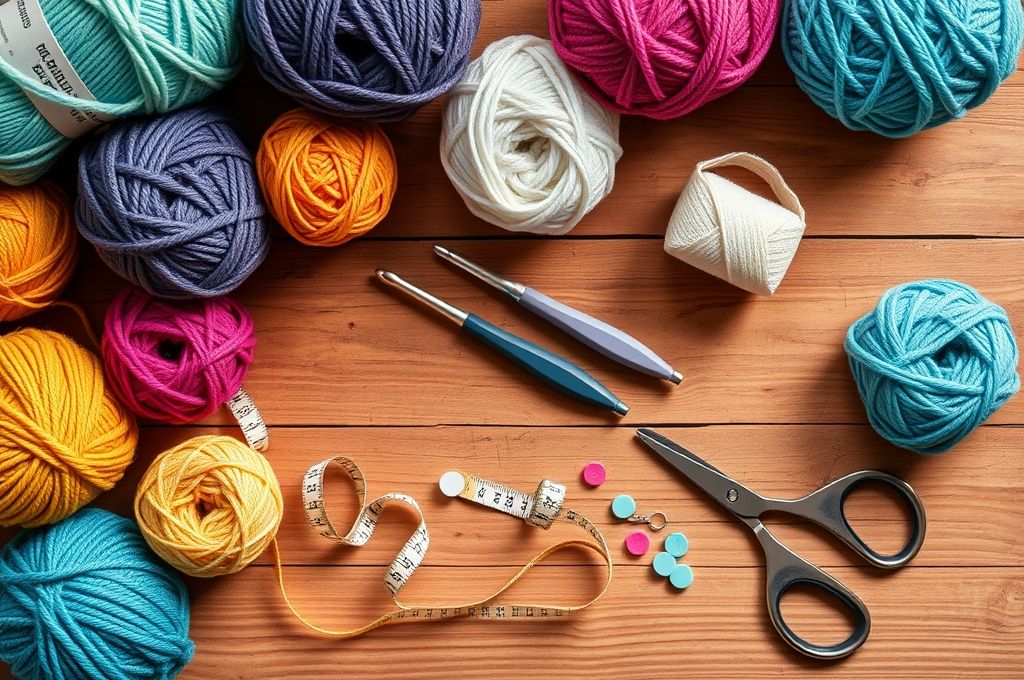
Now that you’re excited to begin, let’s talk about the essentials. Starting crochet doesn’t require a huge investment—just a few key tools.
1. Crochet Hook
The most important tool is your crochet hook. Hooks come in different materials (aluminum, bamboo, plastic) and sizes (measured in millimeters or letters like H/5mm or I/5.5mm). For beginners, a medium-sized aluminum hook (like a 5mm or H-8) is ideal. It’s durable, smooth, and easy to handle.
2. Yarn
Not all yarn is created equal. For your first project, choose a medium-weight (worsted) yarn in a light, solid color. Why light? Because it’s easier to see your stitches. Avoid dark colors or fuzzy yarns at first—they can make it hard to track your work. Acrylic yarn is a great starter choice: it’s affordable, widely available, and forgiving.
3. Scissors
You’ll need a small pair of sharp scissors to cut yarn. Keep them handy!
4. Tapestry Needle
Also called a yarn needle, this large-eye, blunt-tipped needle is used to weave in loose ends when you finish a project.
5. Measuring Tape
Helpful for checking gauge (how tightly or loosely you crochet) and measuring your work.
6. Stitch Markers (Optional but Helpful)
These little rings or clips help you mark specific stitches, especially useful in circular projects like hats or amigurumi.
Pro Tip: Many craft stores sell “beginner crochet kits” that include a hook, yarn, needle, and instructions—all in one package. These are excellent for getting started without the overwhelm of choosing supplies.
Remember, you don’t need everything at once. Start with a hook, some yarn, and scissors. The rest can come as you grow more confident.
3. The ABCs of Crochet: Understanding Basic Stitches
Now comes the fun part—learning how to actually crochet. Don’t worry, we’re not jumping into complex patterns yet. We’ll start with the foundation: basic stitches.
Every crochet project begins with a slip knot and a foundation chain (ch). Here’s how:
- Slip Knot: Make a loop with your yarn, pull the working end through, and slide it onto your hook. Tighten gently.
- Chain Stitch (ch): Yarn over (wrap yarn over the hook), then pull through the loop on the hook. Repeat. Each loop you create is a chain stitch.
Once you’ve made a chain of about 10–15 stitches, you’re ready for your first real stitch: the single crochet (sc).
- Single Crochet (sc): Insert the hook into the second chain from the hook, yarn over, pull up a loop (you now have 2 loops on the hook), yarn over again, and pull through both loops. That’s one single crochet!
After a row of single crochets, you’ll need to turn your work. This means rotating the piece so you can work back across the row. Add a chain 1 (this counts as your first stitch in the new row), then continue with single crochets across.
Other essential beginner stitches include:
- Double Crochet (dc): Yarn over first, insert hook, yarn over, pull up a loop, yarn over, pull through 2 loops, yarn over, pull through the last 2 loops.
- Half Double Crochet (hdc): A middle ground between sc and dc—yarn over, insert hook, yarn over, pull up a loop, yarn over, pull through all 3 loops.
Practice Tip: Make a small swatch (a practice square) using each stitch. This helps you get a feel for the rhythm and tension. Don’t worry if it’s uneven—every crocheter starts here!
4. Common Mistakes (And How to Fix Them)
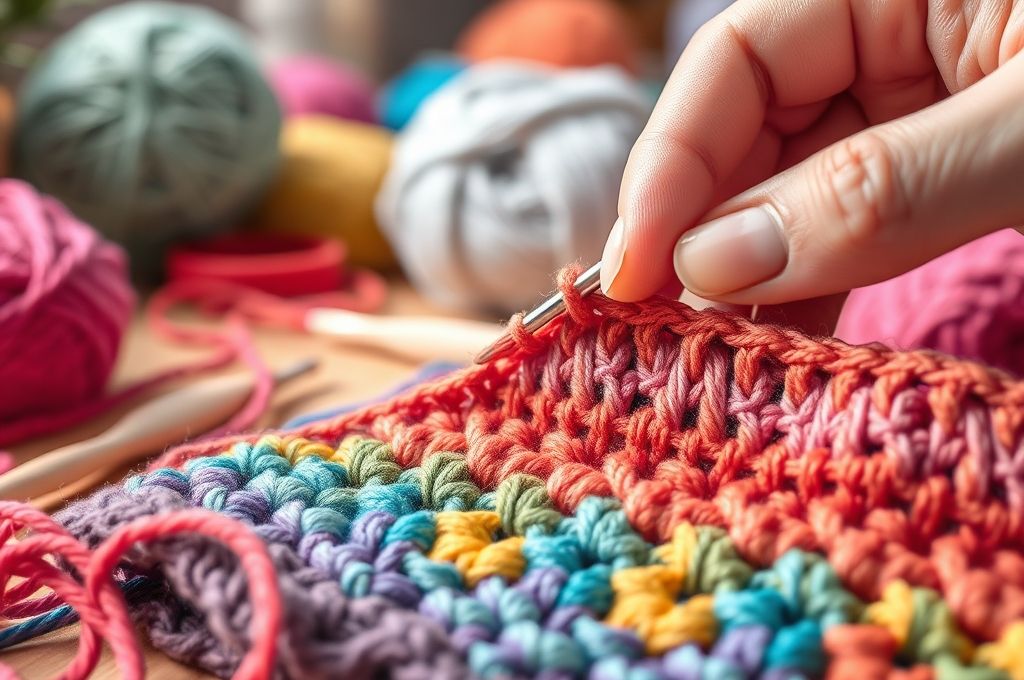
Even the most talented crocheters made mistakes when they started. Here are the most common beginner pitfalls—and how to avoid or fix them.
1. Uneven Edges
If your swatch looks wavy or slanted, you might be adding or skipping stitches. Count your stitches at the end of each row. Most beginners accidentally add a stitch at the beginning or end. Remember: the chain 1 at the start of a row doesn’t count as a stitch in single crochet.
2. Too Tight or Too Loose
Tension is tricky at first. If your stitches are too tight, your hook might struggle to go through. If too loose, the fabric will look sloppy. Practice relaxing your grip. Think of holding a pencil—firm but not tense.
3. Twisted Foundation Chain
A twisted chain can cause your project to spiral. Before starting your first row, lay the chain flat and make sure all the bumps are on the same side.
4. Forgetting to Count
It’s easy to lose track. Use stitch markers every 10 stitches to help you count. Or, work in a quiet space where you can focus.
5. Yarn Tangles
Keep your yarn in a bowl or bag to prevent rolling and tangling. If you’re using a ball, pull from the center to reduce mess.
Bonus Tip: If you make a mistake, don’t panic. You can frog your work (yes, “rip it, rip it”—hence “frogging”) by carefully pulling out stitches until you reach the error. Then re-crochet that section.
Remember: mistakes are part of learning. They don’t mean you’re bad at crochet—they mean you’re growing.
5. Your First Project: A Simple Beginner Scarf
Now that you’ve practiced the basics, it’s time for your first real project: a beginner crochet scarf. It’s practical, rewarding, and teaches you core skills like consistency and turning rows.
Materials:
- Worsted weight yarn (1–2 skeins, about 200–300 yards)
- 5mm (H-8) crochet hook
- Scissors
- Tapestry needle
Pattern:
- Make a slip knot and chain 20.
- Row 1: Single crochet in the second chain from the hook and in each chain across (19 sc). Chain 1, turn.
- Row 2: Single crochet in each stitch across. Chain 1, turn.
- Repeat Row 2 until your scarf reaches desired length (about 60 inches is standard).
- Fasten off: Cut yarn, pull through the last loop, and weave in the ends with your tapestry needle.
Tips for Success:
- Keep your tension consistent.
- Measure your progress with a tape measure every few rows.
- Choose a fun color to keep yourself motivated.
When you finish, you’ll have a cozy, handmade accessory—and the confidence that you can crochet. Wear it proudly or gift it to someone special.
6. Beyond the Basics: Exploring New Stitches and Techniques
Once you’re comfortable with single and double crochets, it’s time to expand your skills. The world of crochet is full of beautiful textures and patterns.
Try the half double crochet (hdc) for a slightly taller, denser fabric. Or experiment with the treble crochet (tr) for a looser, more open weave—great for shawls.
You can also play with color changes. To switch colors, finish the last stitch of the old color, then start the next row with the new color. Simply carry the unused yarn along the edge or cut and weave in the ends.
Another fun technique is working in the round. Instead of turning your work, you join the last stitch to the first with a slip stitch (sl st) and continue in a spiral. This is how you make hats, coasters, and amigurumi.
Don’t be afraid to follow simple patterns from free websites like Ravelry, AllFreeCrochet, or YouTube tutorials. Many include step-by-step photos or videos.
And remember: every expert crocheter was once a beginner holding a hook for the first time. Progress comes with practice, not perfection.
7. The Healing Power of Hook and Yarn
Crochet isn’t just about making things—it’s about feeling things. In a world that moves fast and demands constant attention, crochet offers a rare pause.
Many people turn to crochet during tough times. Veterans with PTSD, cancer patients undergoing treatment, and those managing anxiety have all found comfort in the rhythm of crochet. The act of focusing on one stitch at a time can quiet racing thoughts and bring a sense of control.
There’s even a movement called “craftivism”—using crafts for social change. People crochet blankets for the homeless, hats for premature babies, or protest art to raise awareness. Your hook can be a tool for kindness.
And let’s not forget the joy of gifting. Handmade items carry love in every loop. A crocheted baby blanket isn’t just warm—it’s a symbol of care. A beanie for a friend says, “I thought of you.”
So as you crochet, remember: you’re not just making fabric. You’re weaving patience, resilience, and connection into every piece.
8. Building a Crochet Habit That Lasts
Like any new skill, consistency is key. But how do you keep crochet fun and avoid burnout?
1. Set Small Goals
Instead of “I want to make a sweater,” start with “I’ll crochet for 15 minutes a day.” Small wins build confidence.
2. Create a Cozy Crochet Corner
Dedicate a small space with good lighting, your supplies, and maybe a cup of tea. A welcoming environment makes you more likely to pick up your hook.
3. Join a Community
Follow crochet hashtags on Instagram (#crochetlove, #beginnercrochet), join Facebook groups, or attend local craft nights. Sharing your progress keeps you motivated.
4. Track Your Progress
Take photos of your projects. You’ll be amazed at how much better you get over time.
5. Celebrate Imperfections
Your first scarf might be lopsided. That’s okay. It’s proof you tried. Embrace the wobbles—they’re part of your story.
And if you miss a day? No guilt. Just pick up where you left off. Crochet is meant to be joyful, not stressful.
9. From Beginner to Creator: Designing Your Own Projects
Once you’ve mastered the basics, you might feel the urge to create something entirely your own. That’s when crochet becomes truly empowering.
Start by modifying existing patterns. Change the color, size, or stitch pattern. Want a wider scarf? Add more chains. Prefer a looser fabric? Switch to double crochet.
You can even design simple items from scratch. For example:
- A coaster: Chain 6, join with a slip stitch to form a ring, then work 12 double crochets into the ring. Fasten off.
- A bookmark: Chain 10, single crochet in each chain across, turn, repeat for 6 inches.
As you learn, you’ll start to understand how stitches interact, how gauge affects size, and how shaping works. Before you know it, you’ll be sketching your own patterns.
And who knows? You might even sell your creations on Etsy or teach others. The crochet journey is full of surprises.
10. Final Thoughts: Your Hook, Your Journey
Crochet is more than a hobby—it’s a form of self-expression, a tool for mindfulness, and a bridge to community. It teaches patience, celebrates imperfection, and rewards persistence.
You’ve learned how to choose supplies, make basic stitches, complete a project, and even explore advanced techniques. But more importantly, you’ve taken the first step toward a creative life that’s rich with meaning.
So don’t wait for the “perfect time” to start. Grab a hook, pick a color you love, and make your first chain. It doesn’t have to be perfect. It just has to be yours.
Every master was once a beginner. And now, so are you.
Conclusion: You’ve Got This
Starting crochet is like planting a seed. At first, it’s small and uncertain. But with a little care, attention, and consistency, it grows into something beautiful.
In this guide, we’ve covered the essentials: why crochet matters, what tools you need, how to make basic stitches, and how to complete your first project. We’ve also explored the deeper benefits—mental wellness, creativity, and connection.
Remember, every crocheter—no matter how skilled—started exactly where you are now. With each stitch, you’re building more than fabric. You’re building confidence, calm, and creativity.
So go ahead: pick up that hook. Make a knot. Create your first chain. You don’t have to be perfect. You just have to begin.
And when you do, we’d love to hear from you! What will your first crochet project be? Share your thoughts in the comments below, or tag us on social media with your progress. Let’s grow this cozy, colorful community together.
Happy crocheting! 🪝🧶

Daniele Ferreira is passionate about the world of crochet, dedicating her time to exploring techniques, creating unique pieces, and sharing her knowledge with beginners and aficionados alike. With attention to detail and creativity, she transforms yarn into true works of art, inspiring others to discover the beauty and joy of this manual art.

